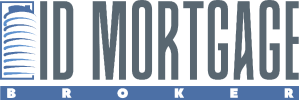Your debt-to-income ratio, or DTI, shows how much of your monthly income goes toward debt payments. It is one of the main factors lenders check when deciding if you can handle a mortgage. A lower DTI means you manage your debts well and have enough income left to take on a home loan.
Keeping your ratio in a healthy range increases your chance of approval and can lead to better loan terms. Paying down credit cards, reducing monthly obligations, or adjusting existing loans are small moves that can create a big impact on your DTI.
This guide explains how to lower your debt-to-income ratio quickly with steps that work in real life. You will also learn how ID Mortgage Broker helps borrowers improve their DTI and find loan programs suited to their financial goals.
Understanding Your Debt-to-Income Ratio
Your debt-to-income ratio, or DTI, compares your monthly debt payments to your gross monthly income. Lenders use it to measure how much of your earnings already go toward financial obligations such as credit cards, car loans, and housing costs. It gives them a clear picture of how comfortably you can take on new debt without stretching your budget.
A high DTI can signal risk to lenders and may limit the size of the loan you qualify for. It can also lead to higher interest rates because lenders view borrowers with heavy debt as less stable.
A low ratio, on the other hand, shows control over your finances and improves your approval chances.
So, what is a good debt-to-income ratio? Most lenders prefer a DTI under 36 percent, but some programs are more flexible. FHA loans, for instance, can accept ratios as high as 57 percent under certain conditions. These programs provide valuable options for borrowers still learning how to fix their debt-to-income ratio while working toward mortgage approval.
ID Mortgage Broker offers FHA loan options with flexible DTI limits and other loan programs designed to match a borrower’s financial situation.
Their team helps clients understand their DTI range and find mortgage solutions that fit their income and goals.
Calculate Where You Stand Before You Apply
Understanding your debt-to-income ratio before applying for a mortgage helps you evaluate your financial readiness. It gives you a clear view of how much debt you carry compared to your income, which is one of the first things lenders assess.
By knowing this number early, you can make informed changes that strengthen your loan application.

How to Calculate Your Debt-to-Income Ratio
To calculate your DTI, add up all your monthly debt payments, then divide that total by your gross monthly income. Multiply the result by 100 to get a percentage. This shows the portion of your income that goes toward paying off debt.
For example, if you earn $5,000 each month and your debt payments total $2,000, your DTI equals 40 percent. That means 40 cents of every dollar you earn covers your current financial obligations.
Knowing this percentage helps you plan how to improve your debt-to-income ratio and reach an ideal range for mortgage approval.
Front-End vs. Back-End Ratios
Lenders evaluate two types of DTI. The front-end ratio measures how much of your income goes to housing costs such as mortgage payments, property taxes, and insurance. The back-end ratio includes all monthly debts, like credit cards, student loans, and car payments.
The back-end ratio usually matters most because it represents your complete financial load. Aiming for 36 percent or lower keeps your profile stronger, though certain programs allow higher ratios under specific terms.
Getting Support and Tracking Progress
ID Mortgage Broker provides personalized consultations to help borrowers understand and reduce their DTI. Their experts guide clients on how to get their debt-to-income ratio down through income adjustments, refinancing, or debt consolidation.
Use a personal finance app or spreadsheet to track your DTI each month. Consistent monitoring helps you stay on target. Review conventional loan qualification requirements to learn how DTI affects eligibility in standard mortgage programs.
Smart Ways to Lower Your Debt-to-Income Ratio Quickly
Lowering your debt-to-income ratio can be achieved through consistent and focused action. The key is to reduce your monthly debt payments while boosting your income. These practical steps can help you reach a more favorable ratio and improve your chances of mortgage approval.
- Pay down high-interest credit cards first. Credit cards usually have the highest interest rates, which heavily impact your DTI. Start by paying off accounts with the largest balances or the highest interest. Even small progress here can create a visible difference in your ratio.
- Consolidate debts to reduce monthly obligations. Combining multiple debts into one lower-rate loan simplifies payments and decreases your total monthly outflow. This strategy helps free up income for other financial goals and improves your DTI.
- Avoid taking new loans before applying for a mortgage. Adding new debt right before applying increases your DTI and can make lenders cautious. Wait to make large purchases or take on additional credit until after your loan is approved.
- Increase income through side work or rental earnings. Boosting your income can reduce your ratio just as effectively as paying off debt. Consider freelance projects, part-time work, or renting a room or property to strengthen your financial standing.
- Negotiate lower interest rates or extend repayment terms. Contact lenders to request better terms. Lower rates or longer payment periods reduce monthly debt commitments, improving your ratio quickly.
- Use refinancing for faster results. Refinancing can restructure your debt for better terms and smaller monthly payments. You can use a cash-out refinance to pay down high-interest debt and bring your DTI down more efficiently.
Each of these steps moves you closer to a DTI level that supports stronger loan eligibility and long-term financial stability.
Loan Options That Help When Your DTI Is Still High
Some borrowers still face a higher-than-ideal debt-to-income ratio even after improving their finances. That does not mean you are out of options. Lenders assess more than just DTI, and certain programs are designed for borrowers who need flexibility.
ID Mortgage Broker offers several paths that can help you learn how to fix your debt-to-income ratio or qualify with adjusted requirements.

DSCR Loans for Real Estate Investors
A Debt Service Coverage Ratio (DSCR) loan focuses on the income generated by an investment property rather than your personal income. This makes it a suitable choice for real estate investors with stable rental earnings but higher personal DTI levels. The property’s cash flow is what determines your eligibility, not your personal debts.
You can find alternative financing options like DSCR loans through ID Mortgage Broker. These programs help investors grow their portfolios without being limited by their own income ratios.
No-Document Loans for Self-Employed Borrowers
Self-employed borrowers often face difficulties with traditional income verification. No-document loans provide a more flexible route by relying on bank statements or asset records instead of tax returns. This type of financing helps borrowers with irregular or seasonal income maintain access to mortgage opportunities.
ID Mortgage Broker offers no-document loan programs for self-employed borrowers designed to simplify the approval process and accommodate real earning patterns.
FHA Loans for Higher Ratios
FHA loans allow debt-to-income ratios as high as 57 percent with qualifying factors such as strong credit history or a larger down payment. These programs work well for first-time buyers or those improving their financial standing.
ID Mortgage Broker helps clients match these programs to their specific goals, ensuring there is always a way to move forward, even with a higher DTI.
Refinancing to Restructure Your Debt Load
Refinancing is one of the most effective ways to lower your debt-to-income ratio. By replacing an existing loan with a new one that has better terms, you can reduce monthly payments and improve your cash flow. This approach creates financial breathing room and helps bring your DTI into a healthier range.
A refinance allows you to adjust loan details to match your goals. Switching from a variable rate to a fixed rate provides stability, while shortening the loan term can reduce long-term interest costs.
Some borrowers choose to refinance to extend repayment terms, which lowers monthly payments and helps them reach a more manageable DTI.
For example, a homeowner with a 50 percent DTI could refinance to cut monthly payments by $300. Those savings might reduce the ratio to around 43 percent, putting it within the range many lenders prefer for mortgage approval.
Borrowers can also refinance to pay off their loans faster and reduce their monthly obligations through tailored refinancing plans. ID Mortgage Broker guides clients through options that fit their unique situations, helping them decide which structure makes the most sense for long-term goals.
If you simply want smaller payments to improve your monthly balance, review ways to lower your monthly mortgage payments in California. Refinancing is not just about saving money in the short term, for it sets the foundation for stronger financial stability and better mortgage opportunities.
Build Toward a Healthier Financial Future
Lowering your debt-to-income ratio improves your loan eligibility and strengthens your overall financial position. A healthy ratio shows that you manage your income and debt responsibly, which increases lender confidence and opens the door to better mortgage terms. Knowing what a good debt-to-income ratio is helps you plan ahead and maintain long-term stability.
Keep your finances consistent. Track your DTI each month, limit unnecessary borrowing, and focus on steady progress. Paying off even one loan or consolidating high-interest debt can reduce your ratio and make a measurable difference.
ID Mortgage Broker provides clear strategies on how to lower your debt-to-income ratio through personalized financial guidance. Their team supports borrowers who want to improve their profiles and reach homeownership sooner. Learn more about improving DTI for future real estate investments and start shaping a stronger path toward financial growth today.
FAQs
1. What is a debt-to-income ratio, and why does it matter?
Your debt-to-income ratio, or DTI, compares your monthly debt payments to your income. It helps lenders see if you can comfortably take on a new mortgage.
2. What is considered a good debt-to-income ratio for a mortgage?
Most lenders prefer your DTI to be below 36 percent. Still, some programs, such as FHA loans, can go up to 57 percent if you meet certain conditions. Even if your ratio is a bit higher, the right loan option and steady income can still open the door to approval.
3. How can I lower my debt-to-income ratio quickly?
Start with your highest-interest credit cards. Pay those down first, then look for small ways to increase your income, such as taking on side projects or renting out a room. Avoid adding new debts before applying for a mortgage.
4. Does refinancing really help lower my DTI?
It often does. By refinancing, you can replace a loan with one that has lower monthly payments or a longer term. That frees up more of your income each month and improves your ratio. For many borrowers, this single move makes a noticeable difference in their loan eligibility.
5. Can I still qualify for a mortgage with a high DTI?
Yes. Some loan programs are built for borrowers who have higher debt ratios but strong credit or stable income. FHA loans, DSCR loans for investors, and other flexible options can help you qualify even when your DTI is above average.
6. How can ID Mortgage Broker help me improve my DTI?
The team at ID Mortgage Broker works closely with clients to find smart, practical ways to lower DTI. They can suggest refinancing, review your debt structure, or match you with loan programs that fit your situation.




